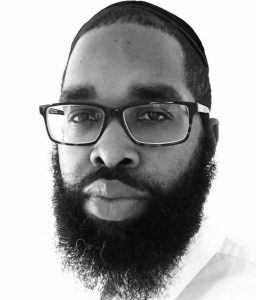Jews By Choice
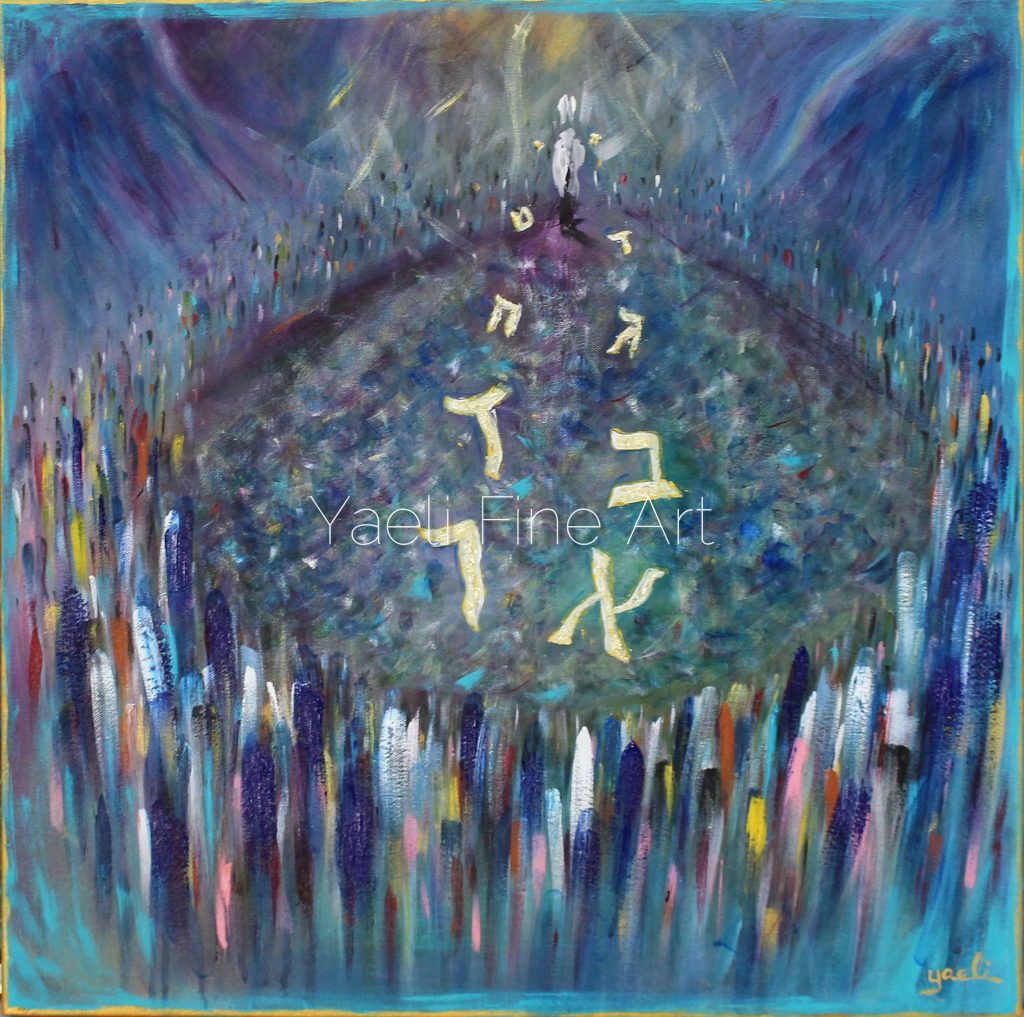
About the Illustration: We chose this stirring painting “Har Sini” by Yaeli to illustrate our section on conversion since the Revelation at Har Sinai was, in essence, a mass conversion to Judaism of the thousands of descendants of Av-raham. In reality, every Jew is descended from a convert; some go back to Har Sinai, others to those who converted later in history. “Har Sini” is an expressionistic depiction of the Jewish spirit surrounding Har Sinai. The Aleph Bet, falling out the the luchot that Moshe is receiving, are entering the hearts of the Jewish people. Yaeli is an Israeli-born artist (now based in New York) who brings her unique contemporary artistic vision and expres-sionist technique to a wide variety of Jewish subjects including weddings, Jerusalem and Biblical images. Yaeli works across multiple media including acrylics and watercolors. Learn more at yaelifineart.com.
During this season of reflection and self-transformation, we focus on a few extraordinary individuals who underwent what may be the ultimate self-transformation: conversion to Judaism. While there is much to say on conversion in Israel, this section will focus on the conversion experience in the United States.
It was a fascination with Jewish history that ultimately led Michael Verderame to become Jewish. Jews had persevered despite all of challenges; something here has to be real, he thought.
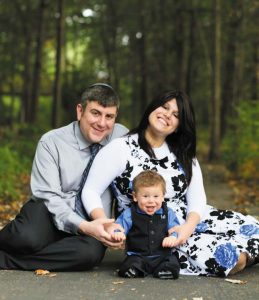
Yitzchak Verderame, pictured here with his wife Dena and son Natan, was in graduate school at the University of Illinois Urbana-Champaign when his interest in Judaism sparked. Today he is assistant dean at the Hebrew Theological College in Chicago.
Yet it wasn’t until Verderame, who grew up Catholic, was in graduate school at the University of Illinois Urbana-Champaign that his interest in Judaism really sparked. Some of his Jewish friends described Shabbat meals and the Pesach Seder. Verderame took to the library to study Judaism more intensely. He also started learning with a few different rabbis on campus—including Rabbi Dani Appel, who at the time headed the OU’s Heshe and Harriet Seif Jewish Learning Initiative on Campus (OU-JLIC) program at Urbana-Champaign.
“The first time I met Michael, we were going to daven Minchah and there were ten of us including him. I said, ‘Let’s start,’ but he called me aside and said, ‘I’m not Jewish,’” recalls Rabbi Appel.
Rabbi Appel and Verderame, now Yitzchak, learned together a few times a week, and when the latter felt ready in January 2013, Rabbi Appel went to the Chicago Rabbinical Council and told them he had a young man who was serious about converting to Judaism. They gave him a comprehensive list of books for Verderame to read. “Michael finished them all within a week!” says Rabbi Appel. “Before he converted, we joked that he would be the next rabbi because he knew more than everyone else.”
I often felt alone. I was both an immigrant and a prospective convert.
Most of us have encountered people who’ve been “reborn” as Jews after extensive study, meetings with a beit din, and a final dip in the mikvah—an arduous process meant to discourage all but the mostly sincerely motivated. Halachah stipulates that one who seeks to become Jewish must be politely but firmly turned away three times before we agree to teach him or her. The most motivated will persist nonetheless.
“I had to beg to become Jewish,” says Zahava Pasternak, now in her fifties and living in Boro Park, New York. “I taught myself Lashon Hakodesh, and had to repeat my story over and over again as I asked people to help me convert.” When the rabbi in her native city in the South didn’t move forward to convert her, she moved to Monsey, New York and sought out rabbis who would.
Barriers to Acceptance
Once on the path to conversion, how do geirim acclimate to frum society and culture? Paloma (Penina) Bain had a relatively easy time adjusting, since she had worked for a Jewish-owned restaurant for several years and had been making Jewish friends and absorbing knowledge about Judaism all along. Aliza Stein [not her real name], a physical therapist, also had Jewish friends before converting. “I’ve lived in four different frum communities, and all but one were very warm and welcoming,” she says. As a single person, she never lacked for Shabbat invitations, and when she married, the community got together and arranged her entire wedding.
Nechemia Davis, a special education teacher now living in Baltimore, had an entirely different kind of challenge when he decided to become Jewish, because he’s black. Once, while walking the streets of a certain frum community wearing a white shirt and black pants, “a fifteen-year-old yeshivah boy crossed the street when he saw me coming; he didn’t know what to think,” he chuckles. But that was an isolated incident, says the former devout Christian. Subsequently, in the same community, when he knocked on a landlord’s door to see an apartment for rent, he had to explain that he was studying for conversion. The woman introduced him to her husband and offered him some kugel. Not only did they rent the apartment to him, they ended up “adopting” him; he became a regular at their table during Shabbat and yom tov.
While Davis’ family did not attend his wedding, the hall was packed with friends and community members. “Rabbi Moshe Wolfson was in Israel at the time, but he called his gabbaim here and told them to bring all the yeshivah bachurim to dance at my wedding,” says Davis, who has a strong connection to the mashgiach ruchani at Mesivta Torah Vodaath in Brooklyn. When his wife had a baby boy after their move to Baltimore, friends drove down from New York with a car filled with food, chick peas and beer to celebrate the vach nacht [the night preceding the
brit milah].
Finding a Bashert
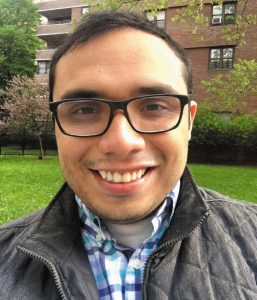
Avi Sosa, an engineer from a Spanish-speaking country, moved to a much smaller Orthodox community in the States to find a congenial rabbi and congregation that gave him the encouragement he needed on his spiritual journey.
Unfortunately, converts are not always embraced with open arms. Avraham (Avi) Sosa found the barriers to conversion to be more social than halachic or cultural. An engineer from a Spanish-speaking country, he says he had a difficult time fitting in with the Jewish community in his home country. Shortly thereafter, he left for a bustling Jewish community in the States, but had trouble breaking in there as well. “I often felt alone. I was both an immigrant and a prospective convert.” He later moved to a much smaller Orthodox community where he found a congenial rabbi and congregation that gave him the encouragement he needed on his journey.
Many geirim convert while single, and once Jewish, want nothing more than to marry, start a family and join a community. But convincing shadchanim to see beyond their non-Jewish origins can be challenging. “When I tell shadchanim I’m a ger, the dynamic changes,” Sosa says.
Many well-intentioned people assume a convert will have the most in common with another convert, or that only a convert will be willing to date another convert. But that feels incredibly unjust to many geirim who worked hard to become members of the Jewish people. Bain, who finds that people check her conversion credentials closely before proposing shidduchim, is adamant that she does not want to marry another convert. “I have no Jewish family,” she says. “I want to marry someone who does, so my children will grow up with Jewish family. I have to think about where I’m going for every Shabbat and holiday, but my children shouldn’t have to.”
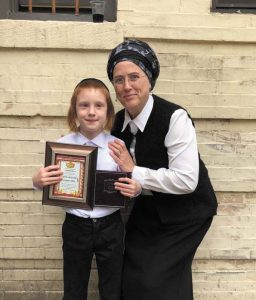
Zahava Pasternak with her son, who attends a Chassidic yeshivah; she and her family live in Boro Park.
Pasternak, whose husband is from Israel, married in her forties and feels fortunate to have found her spouse. But she avows that the process wasn’t easy. “I felt I was Class B when it came to shidduchim,” she says. Her husband, however, is “everything she davened for.” She’s not concerned about marrying off her own son, “as Hashem already knows who his zivug is,” she affirms.
Stein’s oldest children are already of marriageable age, and she finds that the shidduchim suggested to them are often other geirim. “Why should my child marry a ger?” she says indignantly. “My children are frum from birth! Why should they have to be subjected to the same outsider status that I experienced?”
Davis married a frum-from-birth black woman whose parents converted many years ago. “It helps to have married someone who’s like me, who understands my background,” he says. On the other hand, since Davis began learning about Judaism and converted within a Chassidic milieu, it was an adjustment to deal with his wife’s family’s Sephardic minhagim.
And yet, some geirim integrate into the frum community in every way—including finding a Jewish spouse—with few bumps on the road. Verderame found the process rather seamless; he already had a parnassah and was able to find a spouse relatively quickly. “People were very welcoming,” he says. “I never really had a problem.
“Converting and [going into the mikvah] was intense,” he adds. “It was a big accomplishment. It was a big commitment; would I be able to live up to it?” But the beit din rabbis were “very approachable,” he says. In fact, they were so approachable that one even offered him a job—while his hair was still wet! As a result, Verderame, who is in his forties, has two master’s degrees, a PhD and a JD in law, is assistant dean at the Hebrew Theological College in Chicago, which is now part of the Touro system. Shortly after converting, he was set up with Dena, the woman who would become his wife.
Becoming More Aware
How can we be more sensitive to the needs of geirim?
Firstly, we have to keep in mind that geirim, as well as baalei teshuvah, face certain challenges that the typical FFB has no experience with. Having no frum relatives is difficult, says Stein. There is no support system when it’s time to make yamim tovim or tuition payments. “We have no parents to go to on yom tov, no shvigger [mother-in-law] to buy new Pesach shoes for the children,” she says.
You don’t want to create a situation where geirim have to constantly question their Jewish status. Once they’re in, they’re in.
Secondly, Stein would also like others to understand that she didn’t simply crawl out from under a rock when she became Jewish; she had been a worthwhile person in her non-Jewish life, with valuable experiences and knowledge. And now that she’s frum, she’s well-educated in Judaism and doesn’t need to be shown the basics. “I’ve been frum for thirty years,” Stein says. “I know how to check lettuce [for bugs]! Yet some folks still think I need to be instructed.”
Thirdly, we all must make efforts to help a new convert feel part of frum life: extend sincere, repeated invitations for Shabbatot and yamim tovim; make genuine efforts to find shidduchim appropriate for their personalities and hashkafot; try to understand and help with their other needs, and most importantly, respect who they were and who they became. As Sosa says: “Care about us, and treat us as equals.”
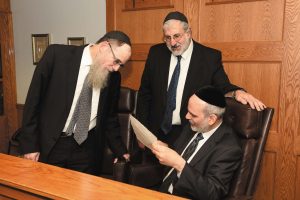
The Chicago Rabbinical Council (CRC) Beit Din oversees conversion with GPS-sponsoring rabbis throughout the Midwest and beyond, in communities including Memphis, Dallas, Kansas City and Denver. Recently, a woman flew in from Hong Kong to complete her geirut. From left: Dayan Rabbi Ephraim Friedman, Dayan Rabbi Daniel J. Raccah and Av Beit Din Rabbi Yona Reiss. Courtesy of the Chicago Rabbinical Council
Verderame hopes that others can have an experience similar to his own. When he was on the search committee to hire a national director of conversion for the RCA’s Network of Regional Batei Din for Conversion, he wanted to impart his insights about going through the process smoothly—and what can be learned from it. “You don’t want to create a situation where geirim have to constantly question their Jewish status. Once they’re in, they’re in.”
“The Torah tells us to be kind to converts,” says Rabbi Appel. “Obviously, if the Torah tells us this, it means human nature is to be less sensitive and compassionate to outsiders. For people who have made such a big change in their lives, such slights can hurt even more.
“A convert is Jewish now and part of the community. Treat them as Jews and love them as anyone else.”
Yet while some geirim choose to leave behind much of their non-Jewish pasts, others find surprises there. One thing Rabbi Appel didn’t know, which Verderame actually only recently discovered, is that his maternal grandmother—an immigrant from Mexico who was very open to his conversion and interested in the Jewish customs before she passed away recently—may have had some conversos in her lineage.
“Part of me would almost say it doesn’t matter, because I am where I am now,” Verderame says. “On the other hand, I have a son now, and it might be nice for him to know some of the history.”
Barbara Bensoussan has worked as a university instructor and a social worker and currently writes for Jewish newspapers and magazines.
Also in this section:
Loving the Convert by Yona Reiss
Up Close with Abby Lerner by Yehudit Garmaise

